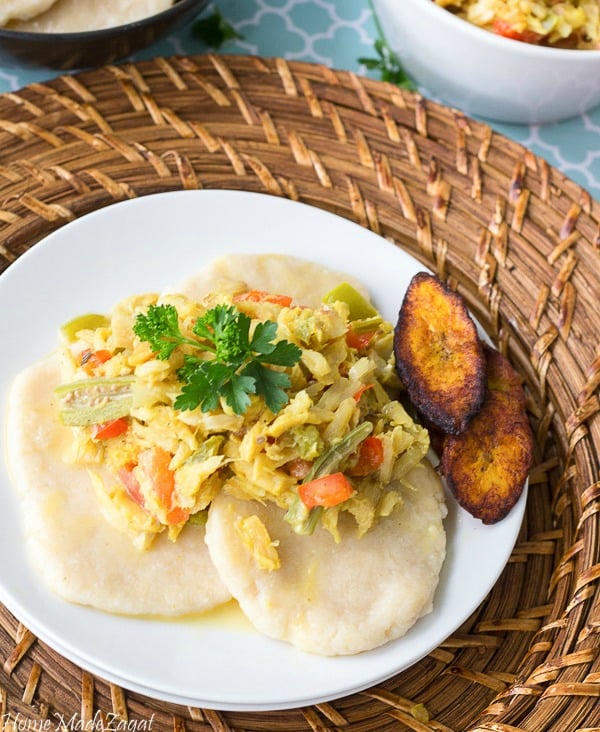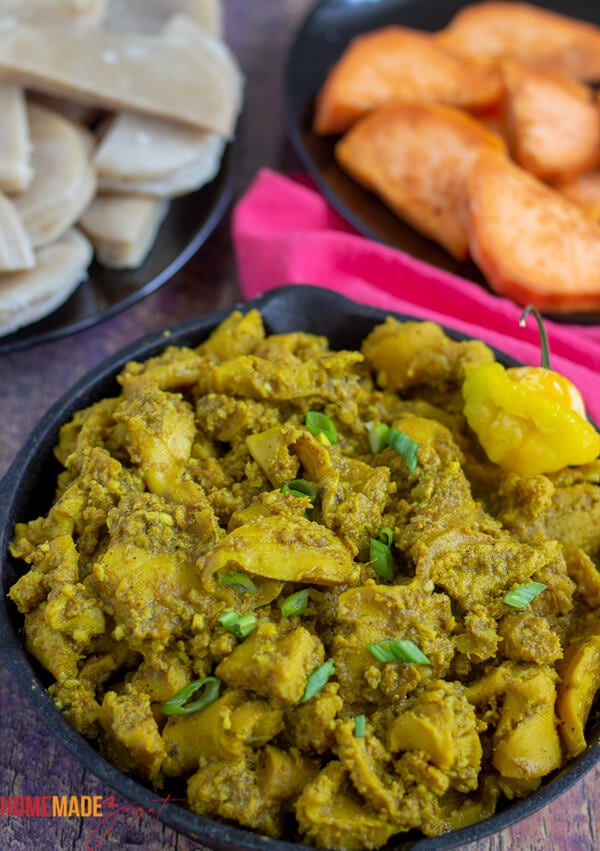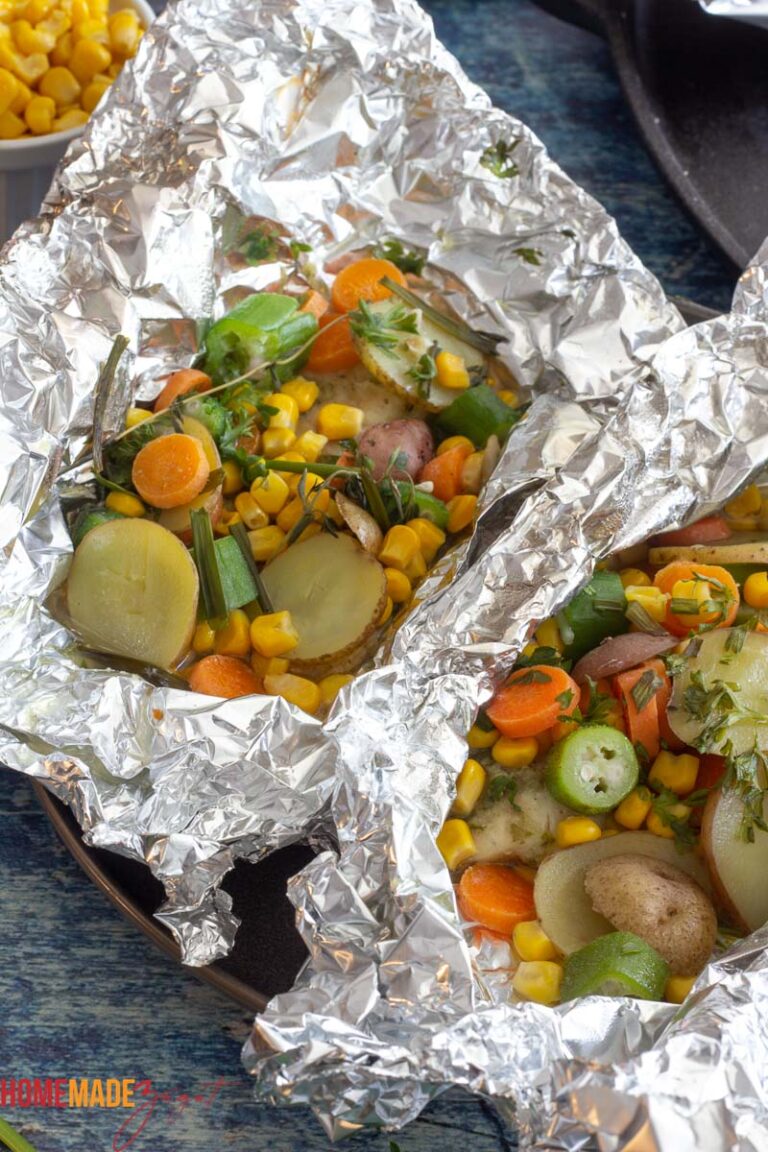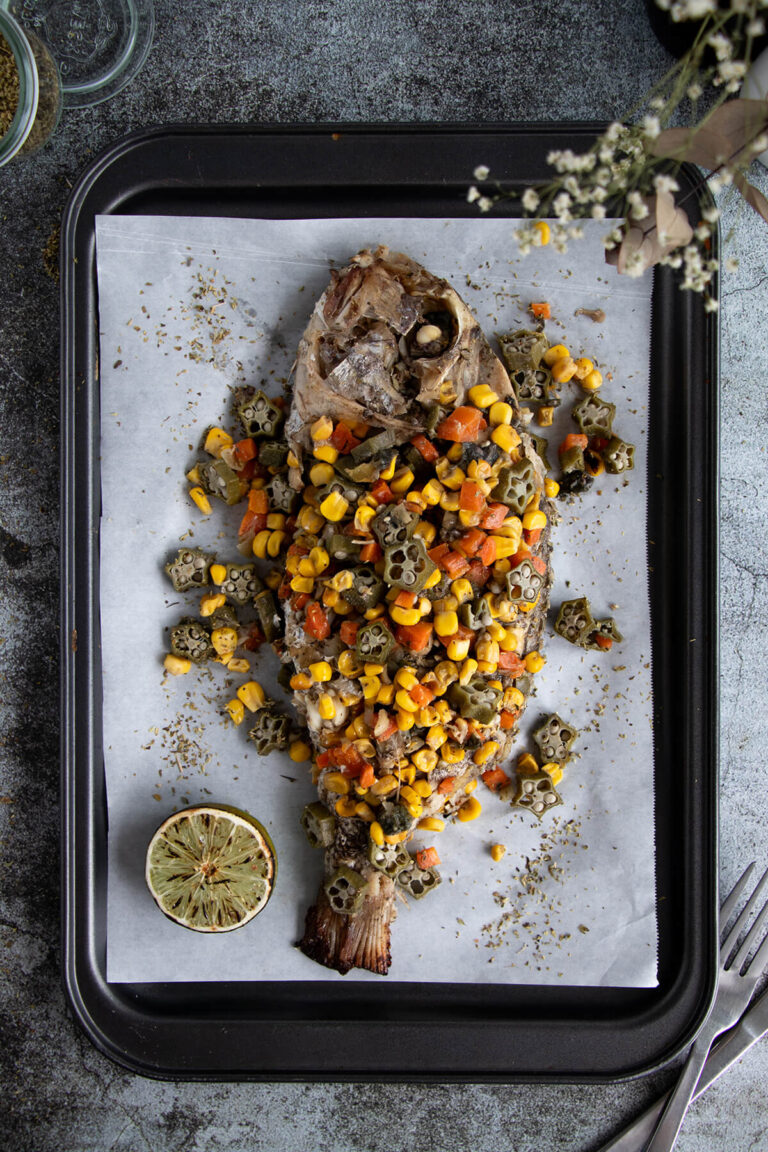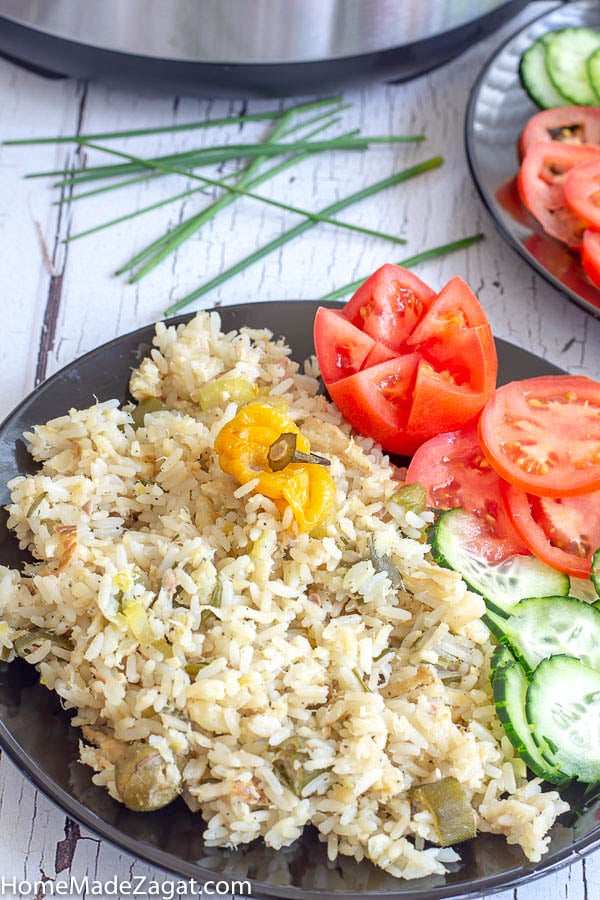What is saltfish and how to cook with it
Saltfish is one of those ingredients that shows up everywhere in Caribbean cooking—breakfast, lunch, dinner, even in a fritter at a beach lime. But what exactly is it, and why do we love it so much?
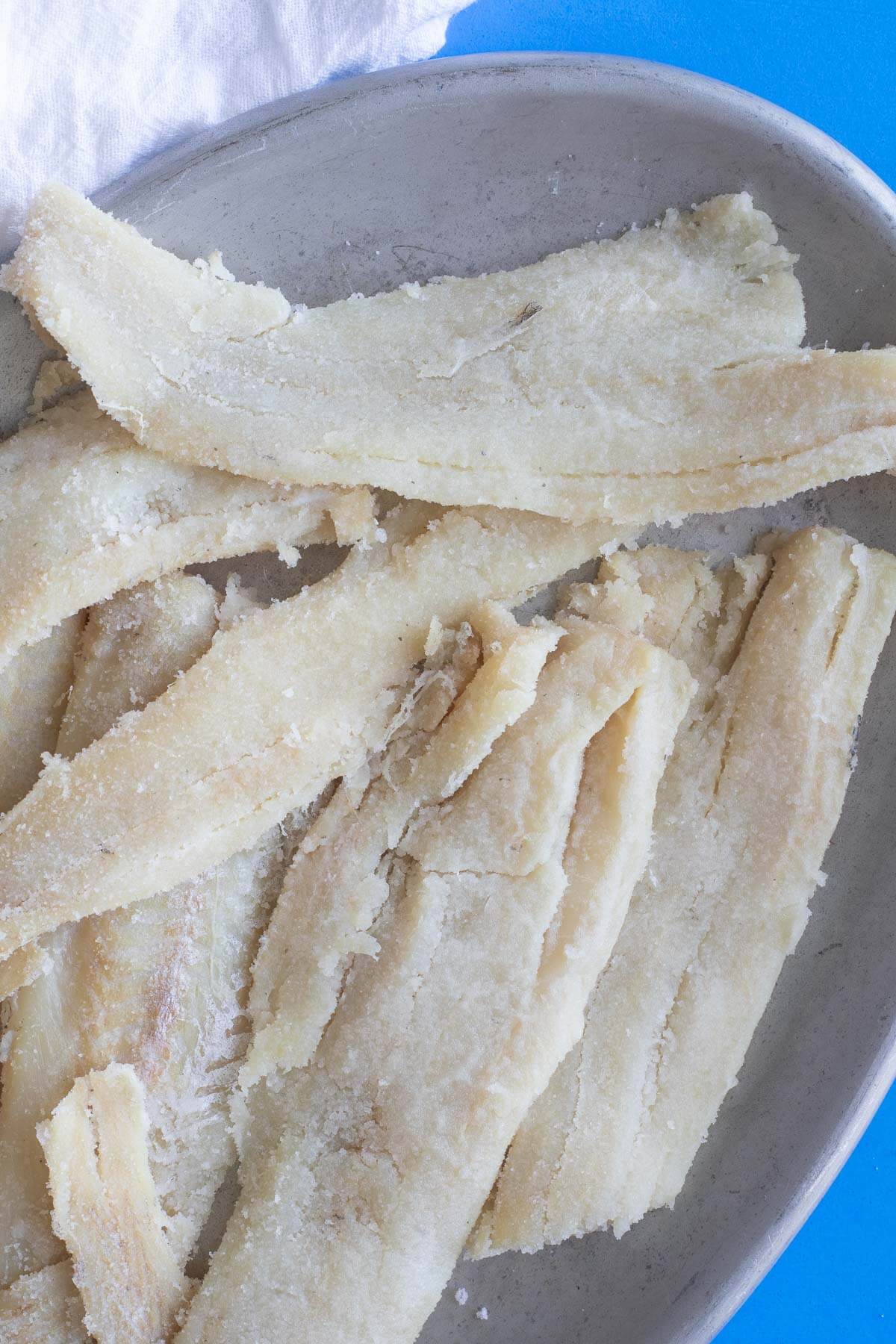
In this post, we’re breaking down everything you need to know about saltfish. From its colonial roots and preservation methods to how we prep it and the many dishes that feature it. Whether you’re new to Caribbean cooking or just curious about this salty staple, you’re in the right place.
Let’s dive into the world of saltfish and all the flavor it brings to the table.
Salt fish in the Caribbean
Saltfish, also called salted cod, bacalao, or baccalà, is that salty, dried fish we’ve been soaking and cooking for generations. It’s usually made from cod, haddock, or pollock that’s been preserved with salt and dried out so it can last a long time without spoiling.
It first made its way to the Caribbean through European trade during colonial times, and even though most of our saltfish today is imported from places like Canada or Norway, it’s still a pantry staple in homes across the islands.
What makes saltfish so valuable? It’s budget-friendly, loaded with protein, and has a rich, savory flavor that levels up almost any dish. Plus, it stores well, making it perfect for stretching meals when fresh fish isn’t on hand.
From buljol on a Sunday morning to stewed saltfish with dumplings, this humble ingredient holds a permanent spot in our Caribbean kitchens.
History of Saltfish
Saltfish has been around for centuries, long before fridges and freezers were a thing. Salting and drying fish was one of the earliest ways to keep it from spoiling, and it made seafood more accessible to people living far from the coast.
When European traders brought this method to the Caribbean during colonial times, it stuck. Saltfish became a major part of our food culture, especially for people who didn’t always have access to fresh meat or fish.
These days, a lot of the saltfish we use comes from places like Norway and Canada, where it’s still made using traditional methods. Some brands even carry sustainability certifications like MSC, which is great for those of us who want to make more eco-conscious choices.
So while saltfish started as a practical solution, it’s grown into something that connects us to history, culture, and now even sustainability.
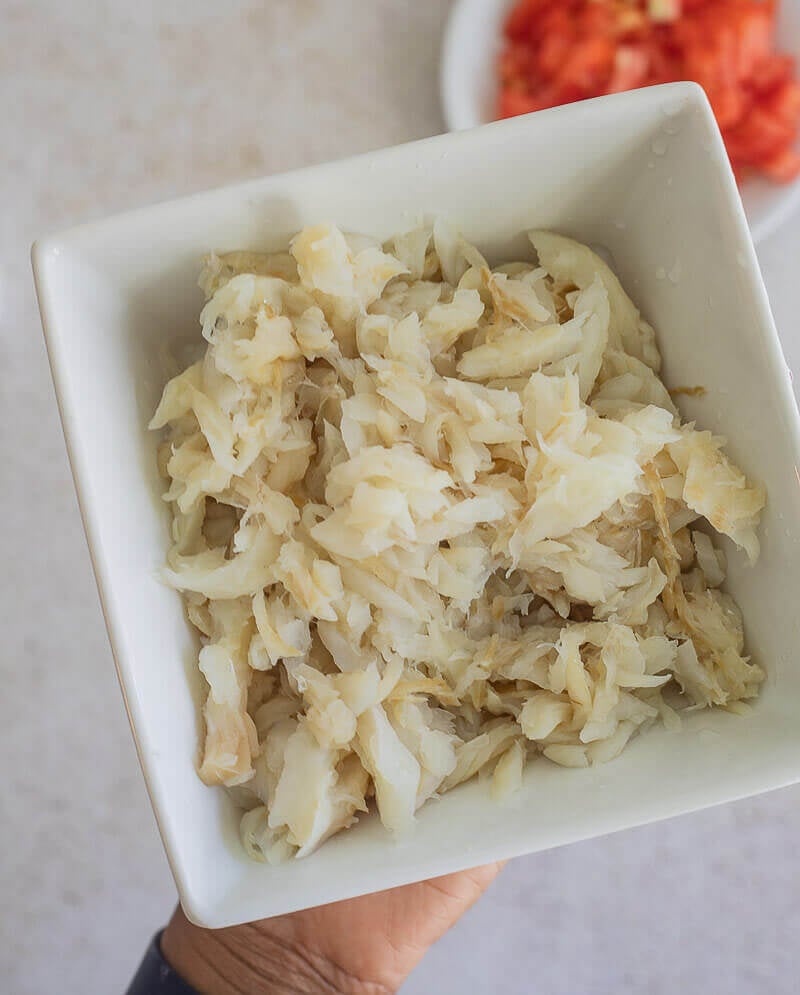
Methods of creating salted fish
Saltfish is made using one of two methods: dry salting or brining.
With the dry method, salt is packed directly onto the fish, drawing out moisture and giving it a firmer texture. It’s an old-school technique that lets producers control how salty the fish gets.
The brine method involves soaking the fish in salty water. This gives the fish a more even salt distribution and a slightly softer texture compared to the dry version.
Both methods do the same job: preserve the fish for long-term storage, but they each create a slightly different end product. Most store-bought saltfish is dry-salted, but it helps to know the difference, especially if you ever try your hand at salting fish yourself.
How to prepare salt fish for cooking
Saltfish isn’t ready to cook straight out of the package, unless you’re trying to get your blood pressure up. Before you can enjoy it, you’ve got to remove most of the salt and rehydrate the fish.
There are a few tried-and-true methods to get it prepped, and which one you use depends on how much time (and patience) you’ve got.
Boiling method – for when you are in a hurry
This is the quick route. Rinse the fish first, then boil it in a pot of water for a few minutes. Drain, refill with fresh water, and boil again. Repeat this 2–3 times or until the salt level is where you like it.
This method softens the fish a bit more, so it’s great if you’re shredding it into something like buljol or a stew.
Soaking method – for overnight prep and better texture
Rinse the fish to remove surface salt, then place it in a bowl of cold water. Let it soak, changing the water every 30–40 minutes. You can also soak it overnight in the fridge for an even gentler desalting.
This method preserves more of the fish’s texture, making it ideal for dishes where you want chunks or flakes of fish
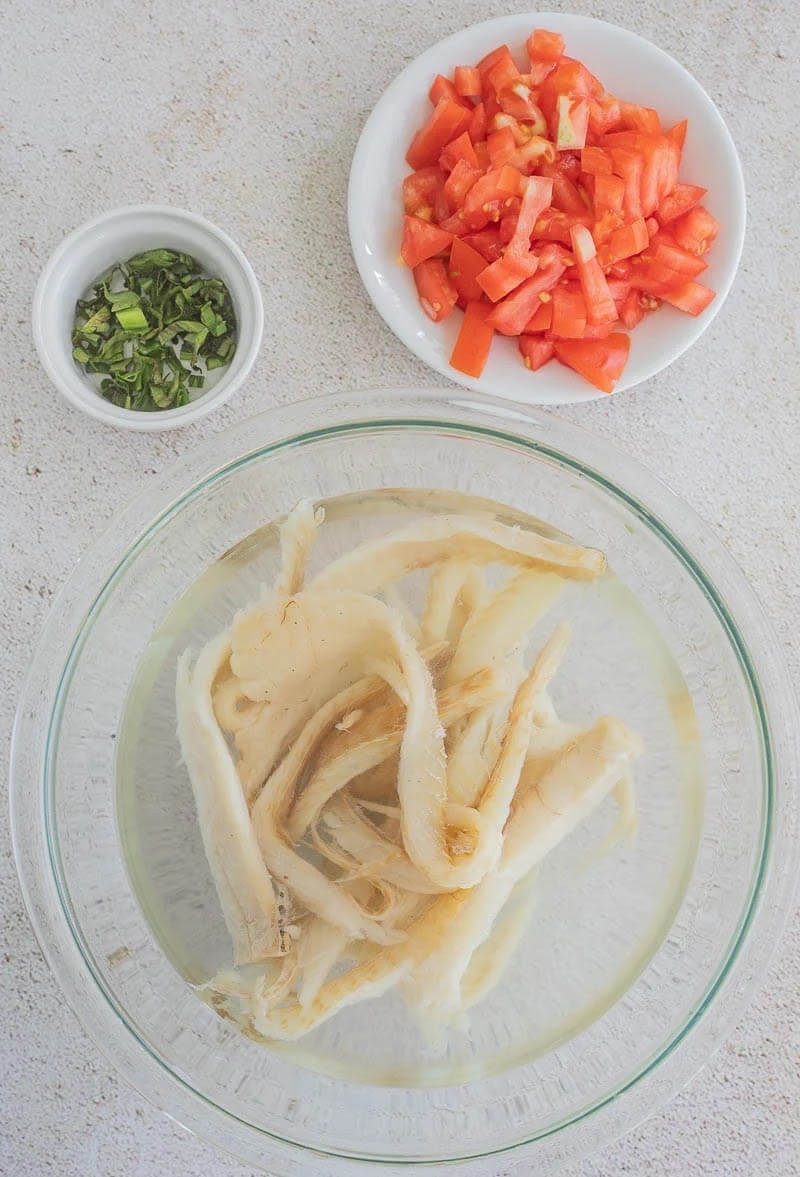
Washout Method
This one’s hands-on. Chip up the fish, toss it into a colander over a bowl, and let cold water run over it while you “wash” it with your fingers. Massage the salt out, pouring off the water as it fills up.
It takes a bit more effort, but it gives you control, and it works great for boneless pieces or when you’re only making a small batch.
No matter which method you use, always taste a little bit before cooking. You want saltfish, not salty fish.
Where to buy salt fish
You can find saltfish in most Caribbean or international grocery stores, and sometimes even in the seafood section of larger supermarkets. It usually comes in a few forms:
- Bone-in with skin – This is the most budget-friendly option, but it takes the most prep. You’ll need to debone, remove the skin, and soak it longer.
- Boneless, skinless fillets – My go-to. A little more expensive, but way easier to work with—especially if you’re short on time.
- Canned/flaked saltfish – The most convenient, but also the priciest. Just open and use (though I still like to rinse it).
Packages typically range from 8 to 16 ounces and are vacuum-sealed for freshness. If you’re new to saltfish, start with the boneless kind so you can focus on the cooking, not the clean-up.
Ways to cook saltfish
Once you’ve soaked and prepped your saltfish, the options are endless. You’ll find it fried up, stewed down, baked in pies, or just tossed with fresh ingredients for a simple breakfast. Here’s how we make the most of this salty superstar across the Caribbean:
Breakfast favourites
- Saltfish Buljol – Light, refreshing, and often served with fried bake or coconut bake. Just toss shredded saltfish with onions, tomatoes, pepper, and a little oil.
- Ackee and Saltfish – Jamaica’s national dish. Saltfish cooked with ackee fruit, onions, and seasoning. Usually paired with dumplings, breadfruit, or fried plantains.
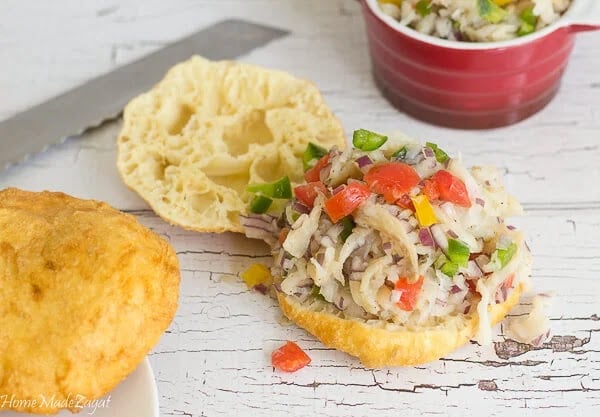
Snack time with saltfish
- Trinidad saltfish accra / Saltfish Fritters – Deep-fried bites of seasoned batter mixed with shredded saltfish. A classic street food and party snack.
- Saltfish Pies – Think empanada-style pastries stuffed with a spiced saltfish mix. Great on the go or as a side dish.
- Saltfish balls – Crispy Caribbean saltfish balls made with green fig or breadfruit and flaked cod. A tasty snack or appetizer also known as codfish balls.
Lunch & Dinner ideas
- Saltfish Rundown – Saltfish simmered in coconut milk with ochro and herbs. Creamy, comforting, and full of flavor.
- Stewed Saltfish – Cooked down in tomatoes and seasonings. Delicious with dumplings, green bananas, or rice.
- Saltfish and Rice Cook-Up – A one-pot dish with coconut milk, ochro, and herbs. Hearty and easy.
- Saltfish with Butter Beans – A filling combo that pairs well with rice or roti.
- Saltfish Fried Rice – Caribbean meets quick weeknight dinner. A good way to use up leftovers.
- Saltfish Buljol Pizza – Yup, you read that right. Caribbean fusion in the best way.
However you choose to cook it, saltfish adds a bold, briny kick to any meal. It’s one of those ingredients that stretches far, works with almost anything, and never goes out of style.
Frequently Asked Questions
Most saltfish is made from cod, but you’ll also find versions made with haddock or pollock. It all depends on where it’s sourced and what’s available.
Nope, it’s preserved raw. You’ll need to soak or boil it first to remove the salt and then cook it fully before eating.
Technically yes… but unless you want to taste straight ocean, don’t skip the soaking or boiling. It’s way too salty out of the package.
Both are preserved fish, but saltfish is salted and dried, while smoked herring is, well, smoked! Smoked herring has a stronger, more intense flavor and is often used differently in recipes.
Unopened, it can last months in the pantry. Once opened, keep it refrigerated and use it within a few weeks, or freeze it for longer storage.
Final thoughts
Saltfish is one of those ingredients that tells a story of trade, tradition, and survival. It’s a pantry hero in Caribbean cooking, showing up in everything from casual breakfast to Sunday lunch to street snacks.
Whether you’re just discovering it or looking for new ways to use it, there’s no shortage of recipes to try. From classic buljol to coconut-rich rundown, saltfish proves time and again that humble ingredients can bring big flavor.
Have a favorite way to use saltfish? Share it in the comments—or let me know if you’re trying it for the first time!
